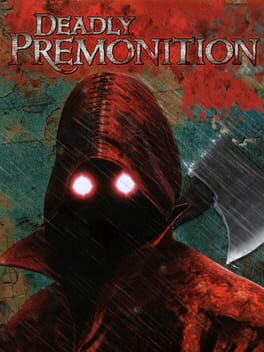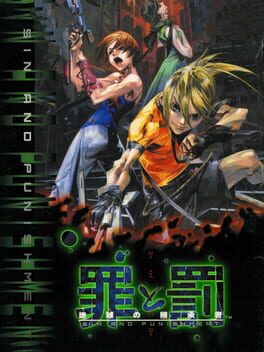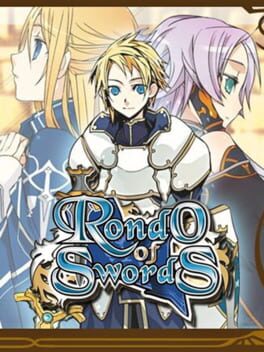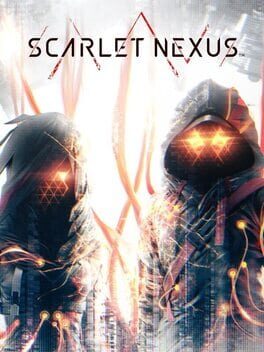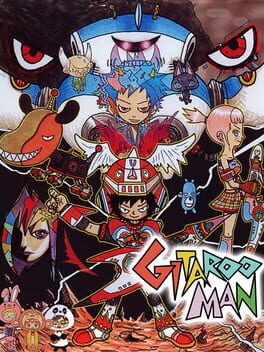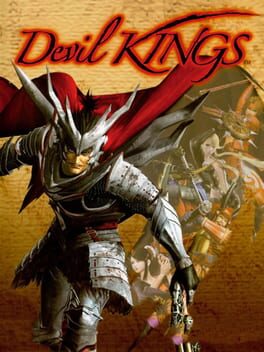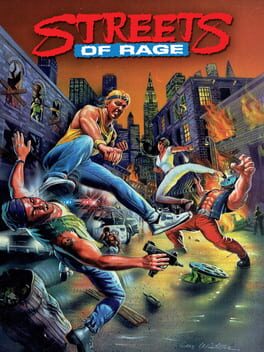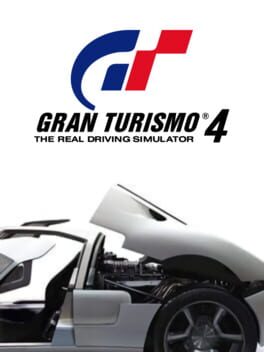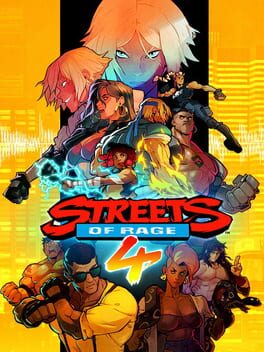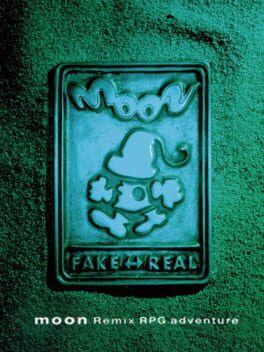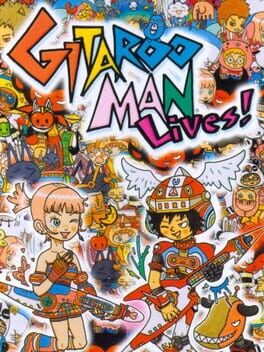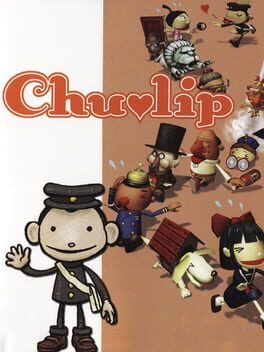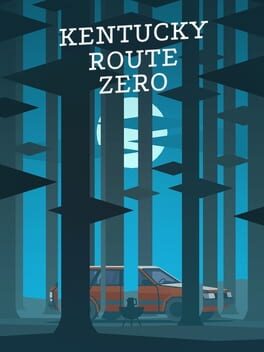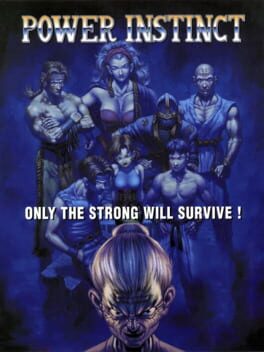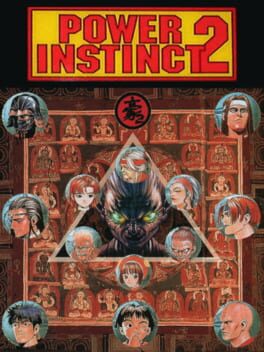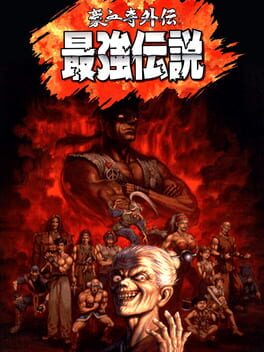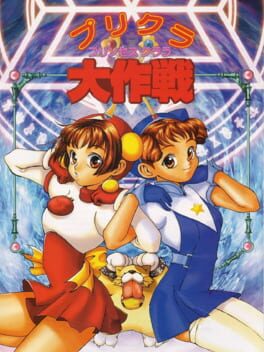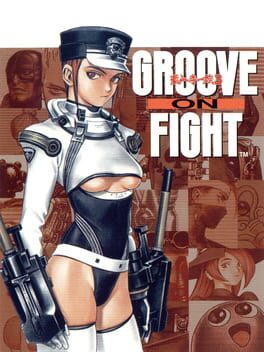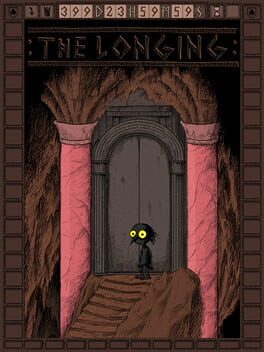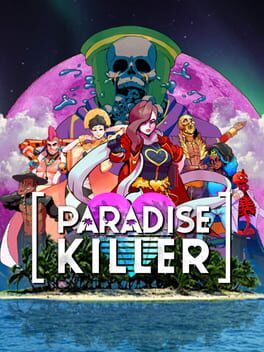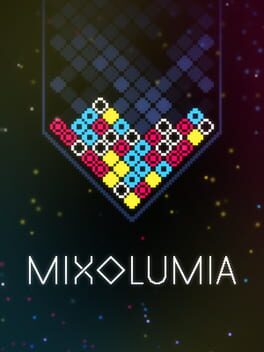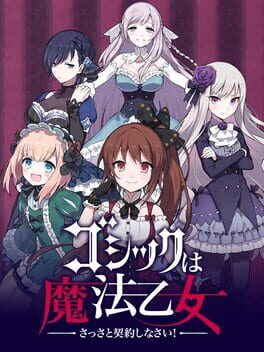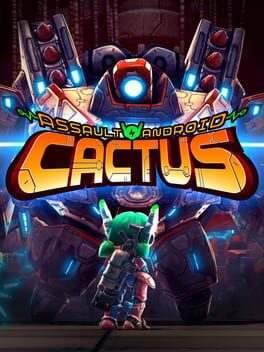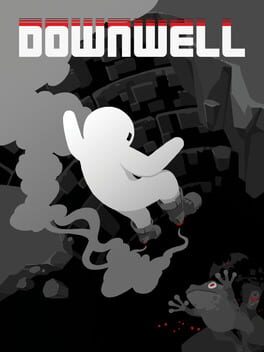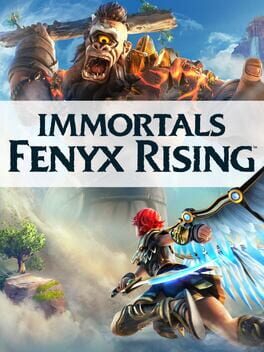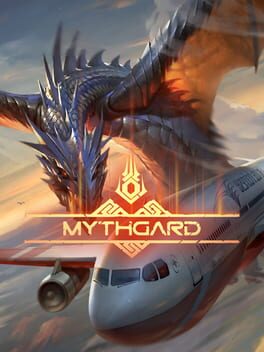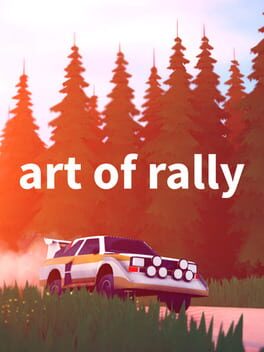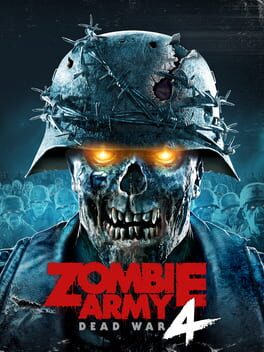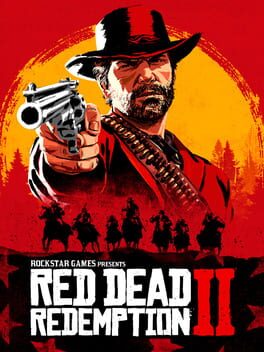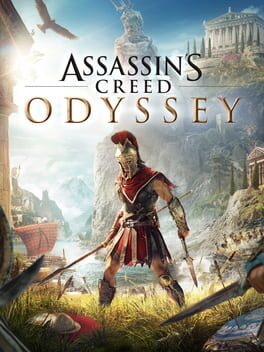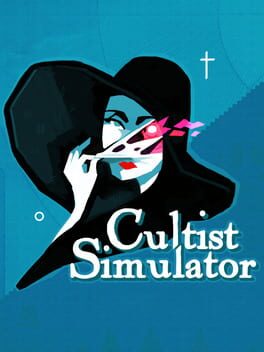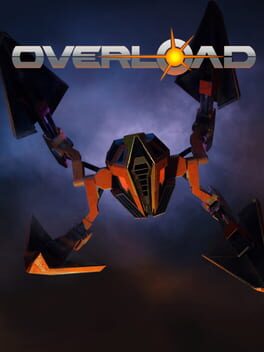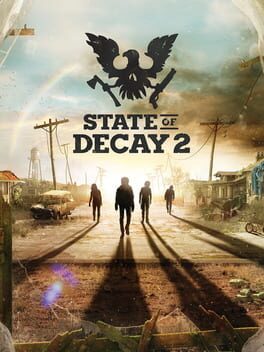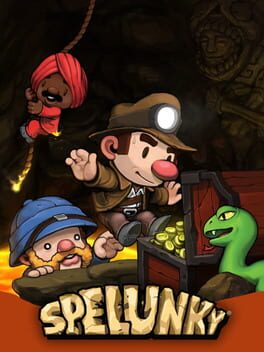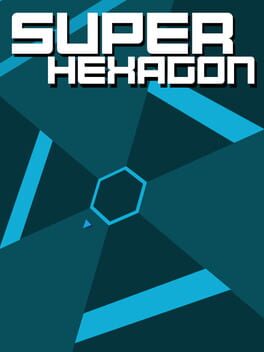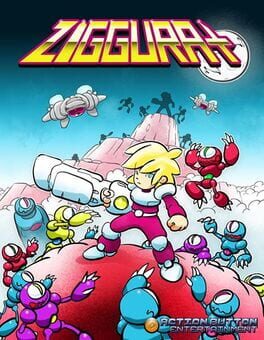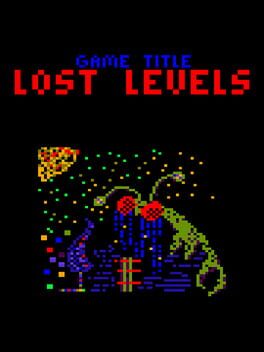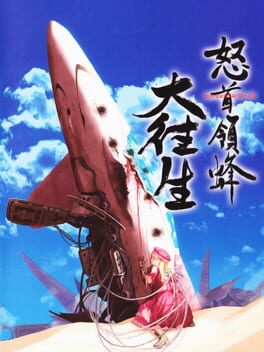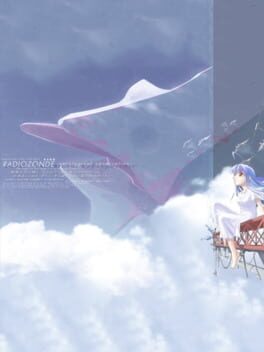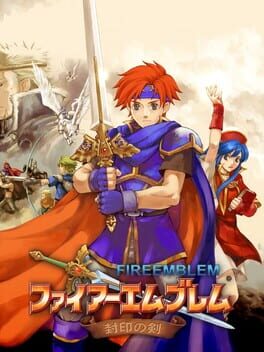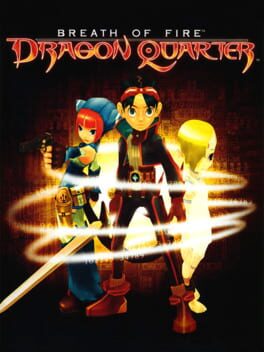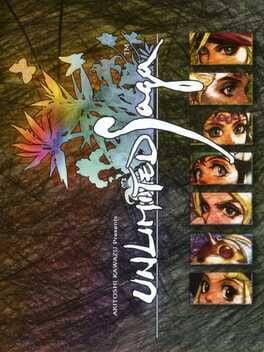33 reviews liked by Drakkar
Deadly Premonition
2010
This review contains spoilers
Más allá de su imagen de homenaje a Twin Peaks y su ambiente y personajes enrarecidos, la parte más importante de Deadly Premonition y que diría que se toma especialmente en serio, es la situación límite a la que te va a hacer llegar... tarde. Al igual que lo tarde que llegó el padre de York para salvar a su mujer, y su terrible momento de flaqueza en esa circunstancia tan adversa que solo empeoró las cosas.
Realmente es un juego que cuenta una historia sobre pérdidas y fracasos casi constantes, pero solo uno concierne personalmente a nuestro protagonista, y por eso está hecho para que a nosotros nos duela más.
Pero a pesar de ello York resuelve el caso. Es realmente un caso maldito, porque un detective puede llegar al final de éste y no poder cerrarlo. Xander, el padre de York, se encontró con este destino: su mujer muriendo frente a él como consecuencia, y el culpable al lado, riéndose. Además se encontraba en la tesitura de tener que matar al amor de su vida él mismo, antes de que fuera víctima de un dolor antinatural e insoportable y que la deformaría para siempre.
Sin embargo, esta situación preestablecida podría decirse que tiene una solución: la forma de resolver el caso es conseguir salir adelante en circunstancias tan adversas como esa.
Pero Xander, simplemente, nunca hubiera podido resolverlo, ni salir adelante, con tal peso sobre la conciencia. Sin embargo York... ¡tampoco puede hacerlo!
Para Xander fue su mujer; para York, la agente Emily. Aunque York no tuviera unos lazos afectivos hacia Emily tan profundos y establecidos como sí los tuvo su padre hacia su madre, eso no significa que guardaran un significado menos especial: Destruir esos lazos implicaría acabar con una fuente de amor con un potencial inmenso y profundo. Por eso se ve incapaz de matarla: es como si una parte de él le instara a sufrir más.
Emily, sin embargo, sabe que el amor es cosa de dos, y valientemente se sacrifica. No quiero entrar en detalle. Hay simbolismo de por medio pero los hechos hablan más.
Adonde quiero llegar es que esta demostración tan drástica, valiente, sin duda dolorosa pero cargada de voluntad por parte de Emily, es lo que da fuerza a York para resolver el caso.
Pienso que este es el mayor significado de Deadly Premonition. Puede que esté enrarecido por su propia forma de ser, pero es natural que ciertas verdades reluzcan al lado de simbolismos y detalles extraños. Esto lo digo ya de forma intuitiva, pero siento que ese attrezzo externo tan característico, extraño, es lo que más le conviene y lo que más ensalza sus mejores valores. Lo que hace brillar lo que quiere comunicarnos.
Si te obsesionas con el simbolismo, no apreciarás tanto la belleza de un lago de Greenvale.
Si piensas que estás viendo un símbolo de la paz invertido, no estarás viendo que en realidad es un árbol.
Realmente es un juego que cuenta una historia sobre pérdidas y fracasos casi constantes, pero solo uno concierne personalmente a nuestro protagonista, y por eso está hecho para que a nosotros nos duela más.
Pero a pesar de ello York resuelve el caso. Es realmente un caso maldito, porque un detective puede llegar al final de éste y no poder cerrarlo. Xander, el padre de York, se encontró con este destino: su mujer muriendo frente a él como consecuencia, y el culpable al lado, riéndose. Además se encontraba en la tesitura de tener que matar al amor de su vida él mismo, antes de que fuera víctima de un dolor antinatural e insoportable y que la deformaría para siempre.
Sin embargo, esta situación preestablecida podría decirse que tiene una solución: la forma de resolver el caso es conseguir salir adelante en circunstancias tan adversas como esa.
Pero Xander, simplemente, nunca hubiera podido resolverlo, ni salir adelante, con tal peso sobre la conciencia. Sin embargo York... ¡tampoco puede hacerlo!
Para Xander fue su mujer; para York, la agente Emily. Aunque York no tuviera unos lazos afectivos hacia Emily tan profundos y establecidos como sí los tuvo su padre hacia su madre, eso no significa que guardaran un significado menos especial: Destruir esos lazos implicaría acabar con una fuente de amor con un potencial inmenso y profundo. Por eso se ve incapaz de matarla: es como si una parte de él le instara a sufrir más.
Emily, sin embargo, sabe que el amor es cosa de dos, y valientemente se sacrifica. No quiero entrar en detalle. Hay simbolismo de por medio pero los hechos hablan más.
Adonde quiero llegar es que esta demostración tan drástica, valiente, sin duda dolorosa pero cargada de voluntad por parte de Emily, es lo que da fuerza a York para resolver el caso.
Pienso que este es el mayor significado de Deadly Premonition. Puede que esté enrarecido por su propia forma de ser, pero es natural que ciertas verdades reluzcan al lado de simbolismos y detalles extraños. Esto lo digo ya de forma intuitiva, pero siento que ese attrezzo externo tan característico, extraño, es lo que más le conviene y lo que más ensalza sus mejores valores. Lo que hace brillar lo que quiere comunicarnos.
Si te obsesionas con el simbolismo, no apreciarás tanto la belleza de un lago de Greenvale.
Si piensas que estás viendo un símbolo de la paz invertido, no estarás viendo que en realidad es un árbol.
Sin and Punishment
2000
A (neon) genesis for rail gunning. Art haus shooter holy grail, diamond encrusted. Humanity alone is incapable of striving towards such innovation, ribbon & bowed; a true mechanical dream. Alternative Focault essay title.
Utilizes every iota of its arsenal at least once during any & all angle or angel. To peer at a target down thee barrel is to be on its opposite end all thee same. Never comfortable in a clean board, always pushing you to fill every inch of thee screen with unbridled chaos & in chaos, is warmth; is achievement.
Crowning royale of what 3D can be: not a mirror to our own world, but an ever-shifting perspective.
Part of my Light/Rail Shooter list.
Utilizes every iota of its arsenal at least once during any & all angle or angel. To peer at a target down thee barrel is to be on its opposite end all thee same. Never comfortable in a clean board, always pushing you to fill every inch of thee screen with unbridled chaos & in chaos, is warmth; is achievement.
Crowning royale of what 3D can be: not a mirror to our own world, but an ever-shifting perspective.
Part of my Light/Rail Shooter list.
Wonder es el peor Mario de la serie principal desde, no se... Hago memoria y es que ni World, ni los Galaxy, ni Land me parecen tan malos. Los New, que ya eran una versión descafeinada de Mario 3, aun guardaban algo más de interés. El movimiento de Mario se había limado mucho pero seguía manteniendo un mínimo de peso, acelerar guardaba su inercia. En Wonder tenemos el movimiento de Mario más digital de toda la saga. En mi partida escogí a Luigi porque me daba la opción y, no se si habrá alguna diferencia con Mario, pero este no es Luigi. En Mario 2 (J), donde se introdujo por primera vez a Luigi con movimiento propio, el personaje patinaba, aceleraba más rápido y tardaba más en frenar, saltaba más alto y era más incontrolable. Luigi aquí no tiene personalidad. El movimiento de Wonder me recuerda a fangames como Super Mario Flashback. Con cosas así se puede perdonar que el que lo hace no sepa que Mario es su movimiento, porque es un proyecto fan, no tiene las mismas exigencias, etc. Aquí lo preocupante es que son de Nintendo quienes han cometido este ataque a los principios básicos del gordo italiano.
El diseño de niveles no mejora el movimiento. A caba bandera de cierre solo me venía a la cabeza: "no me creo que eso haya sido el nivel". Al poco rato de terminar el juego ya había olvidado la mayoría de ellos. Que cosa más básica, plana, sin fricción. Líneas rectas sin apenas obstáculos o enemigos. Ni siquiera se atreven a combinar más de una idea a la vez, algo básico que solían hacer estos juegos. Algunos bill balas en una sección de autoscroll, un lakitu lanzándote pinchones en una sección de plataformas móviles. Algo, lo que sea. Antes de empezar con Wonder me puse el New de Wii, porque nunca lo había jugado y para recordar el tacto de Mario. Nunca pensé que diría algo así, pero pasar de los niveles de New a estos es un abismo.
Y con los power-ups igual. En el New, uno de los nuevos power-ups que te introducen es el traje de pingüino. Tan ridículo como se ve, hace un uso interesante del movimiento de Mario, que al agacharse en carrera se desliza sobre la panza. La orografía de los niveles en los que te lo daban estaba llena de pendientes, subidas y bajadas, hielo y plataformas. Ninguna genialidad pero el mínimo para hacer disfrutable atravesarlos deslizándote. El primer power-up de Wonder es el elefante. ¿Qué aporta exactamente? ¿Se siente más pesado de controlar? ¿Es más lento o contundente? ¿Puedes, yo que se, balancearte con la trompa? Nada. La ausencia de personalidad del elefante es la misma que la de Luigi o Mario sin transformar. Ah, pero puedes dar trompazos. Enhorabuena, le has añadido un ataque cuerpo a cuerpo a Mario. Menuda revolución.
Lo de las habilidades secundarias ni lo voy a comentar, parecen sacadas de Celeste.
El principal atractivo de Wonder, la wonder-flor, que da un giro a los niveles y les aporta el toque de "locura", decir que es anecdótico sería tenerle demasiada consideración. Si te paras a analizar cada sección alternativa, ¿ofrecen algo más allá de la primera impresión? ¿Repetirías un nivel únicamente para volver a jugar esa sección en la que las tuberías suben y bajan o en la que cambia la perspectiva u otra tontería de usar y tirar? Cualquier nivel de Pizza Tower, el que sea, deja en vergüenza la wonder-flor. El ansia y velocidad con que te incitan a jugar, el ritmo de lanzarte ideas sin mayor introducción, ahora estás hecho de queso, ahora eres una armadura, ahora eres una caja de pizza y vuelas y enseguida entiendes el nuevo movimiento y navegas el nivel de otra forma y de pronto llegas al final y la música cambia y acelera y tienes que correr de vuelta a toda hostia y retrocedes a trompicones y Gustavo te mete prisa y entras en un caos a máxima velocidad... Se siente hasta injusta la comparación con Wonder.
Mario Wonder es una desgracia de juego. Es patético como Mario y una falta de saber hacer y visión preocupante. No es que esperase mucho de la Nintendo actual, pero esto me parece un nuevo nivel de bajeza. En un Mario principal, que es peor. Si fuera un Yoshi, que nadie espera nada de él pues todavía, pero en la saga insignia de Nintendo es triste y, sinceramente, me ha quitado las ganas de probar ningún juego que saque esta compañía en el futuro.
El diseño de niveles no mejora el movimiento. A caba bandera de cierre solo me venía a la cabeza: "no me creo que eso haya sido el nivel". Al poco rato de terminar el juego ya había olvidado la mayoría de ellos. Que cosa más básica, plana, sin fricción. Líneas rectas sin apenas obstáculos o enemigos. Ni siquiera se atreven a combinar más de una idea a la vez, algo básico que solían hacer estos juegos. Algunos bill balas en una sección de autoscroll, un lakitu lanzándote pinchones en una sección de plataformas móviles. Algo, lo que sea. Antes de empezar con Wonder me puse el New de Wii, porque nunca lo había jugado y para recordar el tacto de Mario. Nunca pensé que diría algo así, pero pasar de los niveles de New a estos es un abismo.
Y con los power-ups igual. En el New, uno de los nuevos power-ups que te introducen es el traje de pingüino. Tan ridículo como se ve, hace un uso interesante del movimiento de Mario, que al agacharse en carrera se desliza sobre la panza. La orografía de los niveles en los que te lo daban estaba llena de pendientes, subidas y bajadas, hielo y plataformas. Ninguna genialidad pero el mínimo para hacer disfrutable atravesarlos deslizándote. El primer power-up de Wonder es el elefante. ¿Qué aporta exactamente? ¿Se siente más pesado de controlar? ¿Es más lento o contundente? ¿Puedes, yo que se, balancearte con la trompa? Nada. La ausencia de personalidad del elefante es la misma que la de Luigi o Mario sin transformar. Ah, pero puedes dar trompazos. Enhorabuena, le has añadido un ataque cuerpo a cuerpo a Mario. Menuda revolución.
Lo de las habilidades secundarias ni lo voy a comentar, parecen sacadas de Celeste.
El principal atractivo de Wonder, la wonder-flor, que da un giro a los niveles y les aporta el toque de "locura", decir que es anecdótico sería tenerle demasiada consideración. Si te paras a analizar cada sección alternativa, ¿ofrecen algo más allá de la primera impresión? ¿Repetirías un nivel únicamente para volver a jugar esa sección en la que las tuberías suben y bajan o en la que cambia la perspectiva u otra tontería de usar y tirar? Cualquier nivel de Pizza Tower, el que sea, deja en vergüenza la wonder-flor. El ansia y velocidad con que te incitan a jugar, el ritmo de lanzarte ideas sin mayor introducción, ahora estás hecho de queso, ahora eres una armadura, ahora eres una caja de pizza y vuelas y enseguida entiendes el nuevo movimiento y navegas el nivel de otra forma y de pronto llegas al final y la música cambia y acelera y tienes que correr de vuelta a toda hostia y retrocedes a trompicones y Gustavo te mete prisa y entras en un caos a máxima velocidad... Se siente hasta injusta la comparación con Wonder.
Mario Wonder es una desgracia de juego. Es patético como Mario y una falta de saber hacer y visión preocupante. No es que esperase mucho de la Nintendo actual, pero esto me parece un nuevo nivel de bajeza. En un Mario principal, que es peor. Si fuera un Yoshi, que nadie espera nada de él pues todavía, pero en la saga insignia de Nintendo es triste y, sinceramente, me ha quitado las ganas de probar ningún juego que saque esta compañía en el futuro.
Bangai-O Spirits
2008
Bangai-O Spirits
2008
Bangai-O Spirits es el mejor juego de Treasure quizás por ser el menos Treasure. Sin secuencias de acción coreografiadas, sin patrones de jefes a memorizar. Ni siquiera una campaña narrativa culminada en un boss rush. Solo su base jugable y 160 niveles en los que explotar sus mecánicas en el orden que quieras.
Combina un puñado de ideas frescas, más o menos cohesivas, más o menos funcionales (algo común en Treasure) con una gran libertad de expresión y estrategia por parte del jugador (algo no tan común en Treasure). La acción es caótica, estúpida y se gusta en su exceso. Es lo contrario al diseño elegante. Es empezar un nivel y morir en un segundo si no reaccionas al instante o saturar la pantalla con tantas balas que se ralentice el juego a niveles de danmaku. Es devolver misiles con un bate de beisbol. La fricción, la vibración y el sonido de los impactos conforman la acción más eléctrica y contundente que yo haya visto de esta gente.
Cada pantalla tiene su parte de habilidad y su parte de resolución de puzzle, solo que la forma de resolver el puzzle suele ser a martillazos (nota aparte, los 18 puzzle stages son bastante malos y el juego funciona mejor cuando combina acción y estrategia que cuando pretende ser sokoban). Sus niveles, mucho más cortos e inmediatos que en la entrega original, son descargas de adrenalina de un minuto de media y lo más cerca que ha estado Treasure nunca a Taito y Namco en diseño. Alejandose de Contra y acercándose más a New Zealand Story, Arcanoid, Mr. Driller o Pacman. Funciona en espacios abiertos con cientos de misiles volando a tu alerededor; funciona en espacios reducidos donde los proyectiles rebotan por las paredes. Cualquier idea, tonta o brillante, tiene hueco en el juego y da lugar a un humor puramente mecánico marcando el tono desenfadado de la experiencia. Es Treasure desatada y, a la vez, más centrada que nunca.
.
> Si aun con todo el juego se te queda corto aquí hay una pila de niveles de la comunidad . En emulador se cargan y funcionan perfectamente. Solo hay que pasar los archivos mp3 a wav en el caso de MelonDS.
Combina un puñado de ideas frescas, más o menos cohesivas, más o menos funcionales (algo común en Treasure) con una gran libertad de expresión y estrategia por parte del jugador (algo no tan común en Treasure). La acción es caótica, estúpida y se gusta en su exceso. Es lo contrario al diseño elegante. Es empezar un nivel y morir en un segundo si no reaccionas al instante o saturar la pantalla con tantas balas que se ralentice el juego a niveles de danmaku. Es devolver misiles con un bate de beisbol. La fricción, la vibración y el sonido de los impactos conforman la acción más eléctrica y contundente que yo haya visto de esta gente.
Cada pantalla tiene su parte de habilidad y su parte de resolución de puzzle, solo que la forma de resolver el puzzle suele ser a martillazos (nota aparte, los 18 puzzle stages son bastante malos y el juego funciona mejor cuando combina acción y estrategia que cuando pretende ser sokoban). Sus niveles, mucho más cortos e inmediatos que en la entrega original, son descargas de adrenalina de un minuto de media y lo más cerca que ha estado Treasure nunca a Taito y Namco en diseño. Alejandose de Contra y acercándose más a New Zealand Story, Arcanoid, Mr. Driller o Pacman. Funciona en espacios abiertos con cientos de misiles volando a tu alerededor; funciona en espacios reducidos donde los proyectiles rebotan por las paredes. Cualquier idea, tonta o brillante, tiene hueco en el juego y da lugar a un humor puramente mecánico marcando el tono desenfadado de la experiencia. Es Treasure desatada y, a la vez, más centrada que nunca.
.
> Si aun con todo el juego se te queda corto aquí hay una pila de niveles de la comunidad . En emulador se cargan y funcionan perfectamente. Solo hay que pasar los archivos mp3 a wav en el caso de MelonDS.
Rondo of Swords
2007
Rondo of Swords is, like, 2 or 3 small tweaks away from being a great game. But as it is, there's some glaring issues that only get worse as the game progresses. Which is really a shame considering the wrinkles it adds to typical grid-based SRPG combat are all genius.
Melee units attack during their movement by tracing a path through an enemy unit and into one of the squares on the other 3 sides as long as one is open. No other open adjacent squares, no attacking. Unless the enemy is next to another enemy unit and the attacker's speed gives them enough tiles of movement to trace through any additional enemies and eventually reach clear ground.
But hitting/getting hit from behind increases damage significantly, so using all your movement to just barely pop out the other side of an enemy group with your back facing them is a death sentence. Unless you have a heavy unit with the ability to completely block enemy movement through their tile in position to swoop in afterward and cover their back.
But if you move the heavy unit in front of your attacking unit's path first, the attacking unit can run through the heavy to get a buff and maybe start doing enough damage to one-shot the enemies. Unless that would risk filling their "OverBreak" meter too much from the kills and start pulling enemy focus away from the high OverBreak unit you're using to steer the enemy AI toward a chokepoint.
All of those different stats and rules are constantly tugging on eachother during every turn of every map, and when it works there's nothing else out there quite like it. There's even a super cool non-telegraphed story decision you can make by just not attacking a specific character at a specific point, and it totally lands because the game is rewarding you for being unwilling to do something completely monstrous.
Unfortunately the ranged/magic units are extremely uninteresting compared to melee, the downtime systems are very bare-bones and RNG dependent, and (most frustratingly) the difficulty level after a certain point is just absurd. Maps have a hard cap on the number of allowed units that's constant for the entire game and feels waaaaaaay too low. And that's just the max. Some missions' unit caps dip below even that.
But even if the cap was higher you'd still be constantly running short on units since characters that lose all HP in a battle can't be used in the next battle. There's no permadeath thankfully, but the forced benching can result in situations where you literally do not have access to the units you need to clear the next map.
Case in point, I've never finished the game and probably never will barring a complete restart. My save has been stuck on a map just past the big story choice for the better part of a decade now, all because the units I have are the opposite of the ones I need.
I just hope another developer rips off this combat system wholesale and attaches it to a less punishing game some day. It deserves a second chance to shine.
Melee units attack during their movement by tracing a path through an enemy unit and into one of the squares on the other 3 sides as long as one is open. No other open adjacent squares, no attacking. Unless the enemy is next to another enemy unit and the attacker's speed gives them enough tiles of movement to trace through any additional enemies and eventually reach clear ground.
But hitting/getting hit from behind increases damage significantly, so using all your movement to just barely pop out the other side of an enemy group with your back facing them is a death sentence. Unless you have a heavy unit with the ability to completely block enemy movement through their tile in position to swoop in afterward and cover their back.
But if you move the heavy unit in front of your attacking unit's path first, the attacking unit can run through the heavy to get a buff and maybe start doing enough damage to one-shot the enemies. Unless that would risk filling their "OverBreak" meter too much from the kills and start pulling enemy focus away from the high OverBreak unit you're using to steer the enemy AI toward a chokepoint.
All of those different stats and rules are constantly tugging on eachother during every turn of every map, and when it works there's nothing else out there quite like it. There's even a super cool non-telegraphed story decision you can make by just not attacking a specific character at a specific point, and it totally lands because the game is rewarding you for being unwilling to do something completely monstrous.
Unfortunately the ranged/magic units are extremely uninteresting compared to melee, the downtime systems are very bare-bones and RNG dependent, and (most frustratingly) the difficulty level after a certain point is just absurd. Maps have a hard cap on the number of allowed units that's constant for the entire game and feels waaaaaaay too low. And that's just the max. Some missions' unit caps dip below even that.
But even if the cap was higher you'd still be constantly running short on units since characters that lose all HP in a battle can't be used in the next battle. There's no permadeath thankfully, but the forced benching can result in situations where you literally do not have access to the units you need to clear the next map.
Case in point, I've never finished the game and probably never will barring a complete restart. My save has been stuck on a map just past the big story choice for the better part of a decade now, all because the units I have are the opposite of the ones I need.
I just hope another developer rips off this combat system wholesale and attaches it to a less punishing game some day. It deserves a second chance to shine.
Elden Ring
2022
Elden Ring is staggering in breadth and detail, and like anything so big, gradually numbing. You want to slow it down, to see these new areas with the same sense of awe that accompanied every turn at the beginning, to press forward in fear of what may lie ahead. But a sense of forward momentum overtakes until it's irrepressible, and then the game is over. Increasingly difficult demigods appear in sequence to halt the flow, as a substitute for the rich environmental mysteries that had us forgetting there was an overall story in the first place. I'm thinking of how I never wanted to get through Stormveil, because that would mean I was done with Limgrave, and there was still so much to be learned in its fields and ravines and dead beaches. And then it was the same with Liurna. Altus Plateau was the last place I couldn't bear to leave, but even then Leyndell sits on the perimeter as a nagging reminder that things must end, and others must keep moving.
There are internal and external contributors to the persistent lapping of the call of progress here. As the player becomes more familiar with the game, they move more quickly through conflicts, and with the greater investment of player time comes the expectation of proportional narrative payoff. The detail of the here and now becomes a blur on the way to motivators on the horizon, and so Elden Ring like other games of its scale eventually becomes a virtual checklist. These factors are reflected internally, in the production of architecturally streamlined and graphically featureless maps that encourage forward momentum rather than the opportunity for getting lost. The player at a certain point either submits to the flow of the game and finishes it, or turns back and looks to rekindle their sense of wonder in the world behind them. The former is rewarded with quick and empty victory. The latter is also doomed, because by this point everything and everyone you ever cared about is devastated in progress' wake. If the player follows this path they turn to complete the game with a heavy heart, having found the world robbed of meaning before it even closes.
Elden Ring knows that it is doing this, because the interplay of internal (terrestrial, world) and external (noumenal, Outer Gods) forces is the defining fixation of FromSoftware titles. Here it gives the progress narrative the form of the 'Greater Will', and stages a conflict between its adherents, and factions that wish to end the world as we know it. The Greater Will is that the player finishes Elden Ring, their character ascending to the Elden Throne, so that Elden Ring can begin again, forever. New Forsaken will continue to be summoned to the Lands Between to keep the cycle turning. That is why the delivery of the Greater Will is so empty. The paradox of narrative progress for the ending-oriented player is that any ending involving a throne is not an ending but a moment lost to the vastness of procedural eternal recurrence. Encountering the devoted Brother Corhyn and Goldmask across the Lands Between transforms the two into a chorus, commenting on the progression of the Greater Will. Corhyn initially holds Goldmask to be a prophet, but soon thinks him mad, complaining that his rituals "betray a suspicion of the holism of the Golden Order." In truth, Goldmask realises the way of the Greater Will is to mend the ring and initiate its eternal cycle. This suspicion of Order is baked into its very belief system, leading adherents to hope the next cycle is exactly the same as this one.
Goldmask's order is bound to the notion of apocalypse as revelation. (Apokalypsis means 'unveiling' or 'revelation', hence the Book of Revelation is the book of apocalypse). For the apocalypse to operate as revelation, it is not to arrive from forces elsewhere, but to have been set in place by entities that are already here. The revelation is both future-oriented and ancestral, and its event means the elimination of future and ancestry alike. There is perhaps no system more apocalyptic than the game system — every ending is already present in the game text but hidden within the code, and all that needs to happen is for the apocalyptic event to be revealed in play. In Elden Ring's late-game revelation, Goldmask discovers what was already there, Goldmask recognises the corruption of the Order, Goldmask waits for the flames, Goldmask mends the ring so it can happen all over again. The apocalypticism of the Golden Order is, paradoxically, eternal stasis. Everything returns to the beginning so that the Forsaken can arise once more and fulfil the Greater Will. For all the flames and tears and wreckage it is an Order without change or difference.
On the other hand, many in the Lands Between hold a contempt for predestination and dedicate their lives to overthrowing the eternal recurrence of dysfunctional Order. There is a lateral (rather than linear) progression to many of the minor quests, in particular those given by Ranni. The theme and shape of these quests is the fate of stars and gravity, as opposed to the main narrative's rigid iconography of thrones, crowns, and bloodlines. Ranni actively sends you against the current, mapping out a constellation atop familiar places that now appear strange, and exposing undead cities beneath your feet. This is not done in the service of 'uncovering' a living, breathing world, but its opposite: the true undeath of the Lands Between. There's a madness to Ranni's story, and that's because it wants to tell you that you have already been here, many times before, under different names and at different times. Everybody has already died and come back. The fates of everyone you care about have accompanied and in fact defined them since before you even knew them, and so all of your action in the Lands Between has been for the deliverance of their microscopic tragedy. Thops will always arrive too late, Irina will always have to wait too long, Millicent will always live diseased, Latenna will always curl up beside her sister in the snow.
The revelation of Ranni's story is not the arrival of all of the pieces that were already there from the last reset, but that the world was already lost and empty. Travelling across the Lands Between on her apocalyptic mission severs rather than traces the golden contours of the world shaped like a furled finger. She wants to find the man who stole the stars so the moon comes back and the tides with it. Rejecting the dysfunctional order of the past, we now seek things born of nothingness, to realise the possibility of eliminating the eternal 'now' that was never present any way. And so we turn our backs to the stars and march ahead, to end things once again. There is an ending with believing in, and it's the one that never eventuates. It's the one born in the coldest night imaginable. Are you ready to commit a cardinal sin?
There are internal and external contributors to the persistent lapping of the call of progress here. As the player becomes more familiar with the game, they move more quickly through conflicts, and with the greater investment of player time comes the expectation of proportional narrative payoff. The detail of the here and now becomes a blur on the way to motivators on the horizon, and so Elden Ring like other games of its scale eventually becomes a virtual checklist. These factors are reflected internally, in the production of architecturally streamlined and graphically featureless maps that encourage forward momentum rather than the opportunity for getting lost. The player at a certain point either submits to the flow of the game and finishes it, or turns back and looks to rekindle their sense of wonder in the world behind them. The former is rewarded with quick and empty victory. The latter is also doomed, because by this point everything and everyone you ever cared about is devastated in progress' wake. If the player follows this path they turn to complete the game with a heavy heart, having found the world robbed of meaning before it even closes.
Elden Ring knows that it is doing this, because the interplay of internal (terrestrial, world) and external (noumenal, Outer Gods) forces is the defining fixation of FromSoftware titles. Here it gives the progress narrative the form of the 'Greater Will', and stages a conflict between its adherents, and factions that wish to end the world as we know it. The Greater Will is that the player finishes Elden Ring, their character ascending to the Elden Throne, so that Elden Ring can begin again, forever. New Forsaken will continue to be summoned to the Lands Between to keep the cycle turning. That is why the delivery of the Greater Will is so empty. The paradox of narrative progress for the ending-oriented player is that any ending involving a throne is not an ending but a moment lost to the vastness of procedural eternal recurrence. Encountering the devoted Brother Corhyn and Goldmask across the Lands Between transforms the two into a chorus, commenting on the progression of the Greater Will. Corhyn initially holds Goldmask to be a prophet, but soon thinks him mad, complaining that his rituals "betray a suspicion of the holism of the Golden Order." In truth, Goldmask realises the way of the Greater Will is to mend the ring and initiate its eternal cycle. This suspicion of Order is baked into its very belief system, leading adherents to hope the next cycle is exactly the same as this one.
Goldmask's order is bound to the notion of apocalypse as revelation. (Apokalypsis means 'unveiling' or 'revelation', hence the Book of Revelation is the book of apocalypse). For the apocalypse to operate as revelation, it is not to arrive from forces elsewhere, but to have been set in place by entities that are already here. The revelation is both future-oriented and ancestral, and its event means the elimination of future and ancestry alike. There is perhaps no system more apocalyptic than the game system — every ending is already present in the game text but hidden within the code, and all that needs to happen is for the apocalyptic event to be revealed in play. In Elden Ring's late-game revelation, Goldmask discovers what was already there, Goldmask recognises the corruption of the Order, Goldmask waits for the flames, Goldmask mends the ring so it can happen all over again. The apocalypticism of the Golden Order is, paradoxically, eternal stasis. Everything returns to the beginning so that the Forsaken can arise once more and fulfil the Greater Will. For all the flames and tears and wreckage it is an Order without change or difference.
On the other hand, many in the Lands Between hold a contempt for predestination and dedicate their lives to overthrowing the eternal recurrence of dysfunctional Order. There is a lateral (rather than linear) progression to many of the minor quests, in particular those given by Ranni. The theme and shape of these quests is the fate of stars and gravity, as opposed to the main narrative's rigid iconography of thrones, crowns, and bloodlines. Ranni actively sends you against the current, mapping out a constellation atop familiar places that now appear strange, and exposing undead cities beneath your feet. This is not done in the service of 'uncovering' a living, breathing world, but its opposite: the true undeath of the Lands Between. There's a madness to Ranni's story, and that's because it wants to tell you that you have already been here, many times before, under different names and at different times. Everybody has already died and come back. The fates of everyone you care about have accompanied and in fact defined them since before you even knew them, and so all of your action in the Lands Between has been for the deliverance of their microscopic tragedy. Thops will always arrive too late, Irina will always have to wait too long, Millicent will always live diseased, Latenna will always curl up beside her sister in the snow.
The revelation of Ranni's story is not the arrival of all of the pieces that were already there from the last reset, but that the world was already lost and empty. Travelling across the Lands Between on her apocalyptic mission severs rather than traces the golden contours of the world shaped like a furled finger. She wants to find the man who stole the stars so the moon comes back and the tides with it. Rejecting the dysfunctional order of the past, we now seek things born of nothingness, to realise the possibility of eliminating the eternal 'now' that was never present any way. And so we turn our backs to the stars and march ahead, to end things once again. There is an ending with believing in, and it's the one that never eventuates. It's the one born in the coldest night imaginable. Are you ready to commit a cardinal sin?
Citizen Sleeper
2022
It's a testament to how much I like Citizen Sleeper that I'm giving it four stars despite having the absolute worst copy-editing I've ever seen in a professionally-released video game. It is strewn with typos, spelling mistakes, grammatical errors, and a thoroughgoing lack of understanding of the typographical conventions of written English. It is embarrassing, particularly in a game whose focal point is its writing.
All that said... it's still a good game. It walks in the footsteps of similar "modular narrative" games like 80 Days and Sunless Skies in using a light resource-management system to drive the player to allocate their time between many different bite-sized threads of plot, creating an individual route through the game's story. This is one of my absolute favorite microgenres but a difficult one to get right, and I'm thrilled with any game that can pull it off competently.
Citizen Sleeper isn't as successful at this as its forebears, though. By the end of the game you have enough resources to do almost everything the game has on offer, and there turn out to be minimal ways that plots can differ from playthrough to playthrough. Starting a new save feels more onerous than exciting, knowing that so much of it will be clicking through the same dialog rather than forging new paths.
I often finish modular narrative games with a sense that the system on which its built still has untapped potential. The calculus of quests taking inputs and producing outputs while clocks tick down cycle after cycle is simple but expressive—it could give rise to such an intricate web of interlocking threads. Is it too much to hope for that, with the groundwork now laid down, another game could be created on top of it... this time with an editing pass?
All that said... it's still a good game. It walks in the footsteps of similar "modular narrative" games like 80 Days and Sunless Skies in using a light resource-management system to drive the player to allocate their time between many different bite-sized threads of plot, creating an individual route through the game's story. This is one of my absolute favorite microgenres but a difficult one to get right, and I'm thrilled with any game that can pull it off competently.
Citizen Sleeper isn't as successful at this as its forebears, though. By the end of the game you have enough resources to do almost everything the game has on offer, and there turn out to be minimal ways that plots can differ from playthrough to playthrough. Starting a new save feels more onerous than exciting, knowing that so much of it will be clicking through the same dialog rather than forging new paths.
I often finish modular narrative games with a sense that the system on which its built still has untapped potential. The calculus of quests taking inputs and producing outputs while clocks tick down cycle after cycle is simple but expressive—it could give rise to such an intricate web of interlocking threads. Is it too much to hope for that, with the groundwork now laid down, another game could be created on top of it... this time with an editing pass?
Scarlet Nexus
2021
We're initially grounded in the body of Yuito/Kasane, almost claustrophobically. There's a slight hesitation between pressing the jump button and the character performing it, and awkward movement through alleys and stairways suddenly bring to attention just how little control we ever had over them. We are always gelled to environments that both look good and move us through set paths, deflecting interest. It's in combat that our movement becomes fluid, and this fluidity is, curiously, achieved through the character body being divided into pieces, disappearing from the screen in flashes, and directing present action through inanimate objects. Scarlet Nexus' narrative then matches this play, as it revolves around the merits and ethics of intersubjectivity. It's when we move from Yuito/Kasane and are distributed across others that we feel free, and the rhythms of Scarlet Nexus are felt and capable of being instrumentalised. Our eyes blur across the entire field, moving and shaking, and in the moment that we become one with the chaos everything falls into place.
The spatial logic of the hack and slash dictates that environments operate only as empty stages, and that working through the possibilities of the body-in-action is exploration. Items are given glowing outlines that highlight their functionality as game objects, and during action the beautifully imagined backdrops close in, revealing the illusionism of the grey box models. There's a reason for this — Yuito/Kasane direct their interest solely to the goal at hand, and the game graphically maps itself to this hack and slash intentionality. Unfortunately the telekinetic vision that could make the environments vividly alive with possibility gradually reveals how uniform these stages really are. It doesn't help that they are so fragmented, or that our progression through them is so linear. They lack the circularity of something like Nier, where the repetition becomes akin to madness, and instead dissolve as we depart.
As the game advances the levels get more visually minimalistic and so 'true' to their nature as virtual wireframes — like in the Arkham games' detective vision, there is a kick to being granted access to the world one layer down from graphical representation. And this should compound thematically in a game about recursive timelines and datasets. Early on there's the suggestion that the top 'semantic' layer (cities, people, etc) is a simulation projected onto a ruined Real, but Scarlet Nexus ultimately asserts itself as a political (rather than existential) dystopia. The fish and skies are holograms, but the people and buildings aren't. Memories can be transferred from a central database into clones, but we're to believe in the veracity of Yuito/Kasane. It tones down cybernetic/End of History ambiguities to make the case for concrete history and identities, but so why then does it all feel so dead and empty?
As the game through long static expositional sequences divulges its ultimately straightforward narrative (major players capable of manipulating space-time to their own personal/emotional ends), it's Satori the Archivist who continues to warrant interest. Saving and loading states is performed through this mysterious figure who is always there, at home, in dreams, in protected locations, and whose voice becomes less and less human. Early on the Archivist explains his position as a recorder of events for his employer (the same one as that of the protagonist), and this makes sense as the prevalence of surveillance and news networks is underscored as a fact of life in New Himuka. Before long it's clear that he's not actually working for anyone, and admits that he is 'air, and shadow' — an inhuman force that binds and gives shape to all things. This undermines the character-centric form the narrative takes, and insists on the eeriness of Scarlet Nexus' questions of time and virtuality from the sideline. That is, it is not us as Yuito/Kasane moving through concrete space that drives the game; our experience is only the flow of records kept by the Archivist who personifies the immanent code of the game system. It's the air, the shadows, it's God.
The spatial logic of the hack and slash dictates that environments operate only as empty stages, and that working through the possibilities of the body-in-action is exploration. Items are given glowing outlines that highlight their functionality as game objects, and during action the beautifully imagined backdrops close in, revealing the illusionism of the grey box models. There's a reason for this — Yuito/Kasane direct their interest solely to the goal at hand, and the game graphically maps itself to this hack and slash intentionality. Unfortunately the telekinetic vision that could make the environments vividly alive with possibility gradually reveals how uniform these stages really are. It doesn't help that they are so fragmented, or that our progression through them is so linear. They lack the circularity of something like Nier, where the repetition becomes akin to madness, and instead dissolve as we depart.
As the game advances the levels get more visually minimalistic and so 'true' to their nature as virtual wireframes — like in the Arkham games' detective vision, there is a kick to being granted access to the world one layer down from graphical representation. And this should compound thematically in a game about recursive timelines and datasets. Early on there's the suggestion that the top 'semantic' layer (cities, people, etc) is a simulation projected onto a ruined Real, but Scarlet Nexus ultimately asserts itself as a political (rather than existential) dystopia. The fish and skies are holograms, but the people and buildings aren't. Memories can be transferred from a central database into clones, but we're to believe in the veracity of Yuito/Kasane. It tones down cybernetic/End of History ambiguities to make the case for concrete history and identities, but so why then does it all feel so dead and empty?
As the game through long static expositional sequences divulges its ultimately straightforward narrative (major players capable of manipulating space-time to their own personal/emotional ends), it's Satori the Archivist who continues to warrant interest. Saving and loading states is performed through this mysterious figure who is always there, at home, in dreams, in protected locations, and whose voice becomes less and less human. Early on the Archivist explains his position as a recorder of events for his employer (the same one as that of the protagonist), and this makes sense as the prevalence of surveillance and news networks is underscored as a fact of life in New Himuka. Before long it's clear that he's not actually working for anyone, and admits that he is 'air, and shadow' — an inhuman force that binds and gives shape to all things. This undermines the character-centric form the narrative takes, and insists on the eeriness of Scarlet Nexus' questions of time and virtuality from the sideline. That is, it is not us as Yuito/Kasane moving through concrete space that drives the game; our experience is only the flow of records kept by the Archivist who personifies the immanent code of the game system. It's the air, the shadows, it's God.
CANNOT hold up on a second playthrough and I understand the reservations people have about its blocky, awkward storytelling, but I think everyone's aim is off. Good narrative in a game doesn't mean 10+ hours of self-serious cut scenes, and should extend to how the 'story' is delivered via play as well. And that's the thing: holy hell does this thing play like blood and pain and laughter all at once. It's not as tight as the first one, but that was a linear corridor of simplistic AI and repetitive beefcake chokeholds — a consciously retro angle on the action genre — where this is an accelerating mess of burned bridges and pointless anger, in short, the ideal sequel whatever way you look at it. The Polygon review is right when it argues this says nothing beyond the standard revenge text (that revenge is empty) and that the first game fit into a time along with Spec Ops and Hotline Miami where reflexively implicating the player in game violence was en vogue. But where that reviewer is happy to dismiss this sequel on those grounds as well as, implicitly, the revenge format in general, a more generous reading of this game is due. Yes, of course, it's dumb, and yes, horrifically violent, and so but great, but let's return to how and why the procedural logic of the game bears on the player, and what this means in terms of level and AI design that in fact works to consciously thwart their sense of being in control over their actions, in short, to keep them in a state of violent panic. Because in this panic, in this blind rage propelled not by thought but by rapidly accumulating mistakes, this is the game, and this feeling of nervous blood and cackling ecstasy and tears summoned not through cutscenes but by play, this is what cannot be achieved in another medium and this is where criticism needs to be directed.
14 lists liked by Drakkar
by TheMatee |
25 Games
by MaggotBrain |
15 Games
by ludzu |
50 Games
by Liquidrocks |
12 Games
by Xator_Nova |
22 Games
by Xator_Nova |
16 Games
by Xator_Nova |
11 Games
by Xator_Nova |
10 Games
by Xator_Nova |
15 Games
by Xator_Nova |
15 Games
